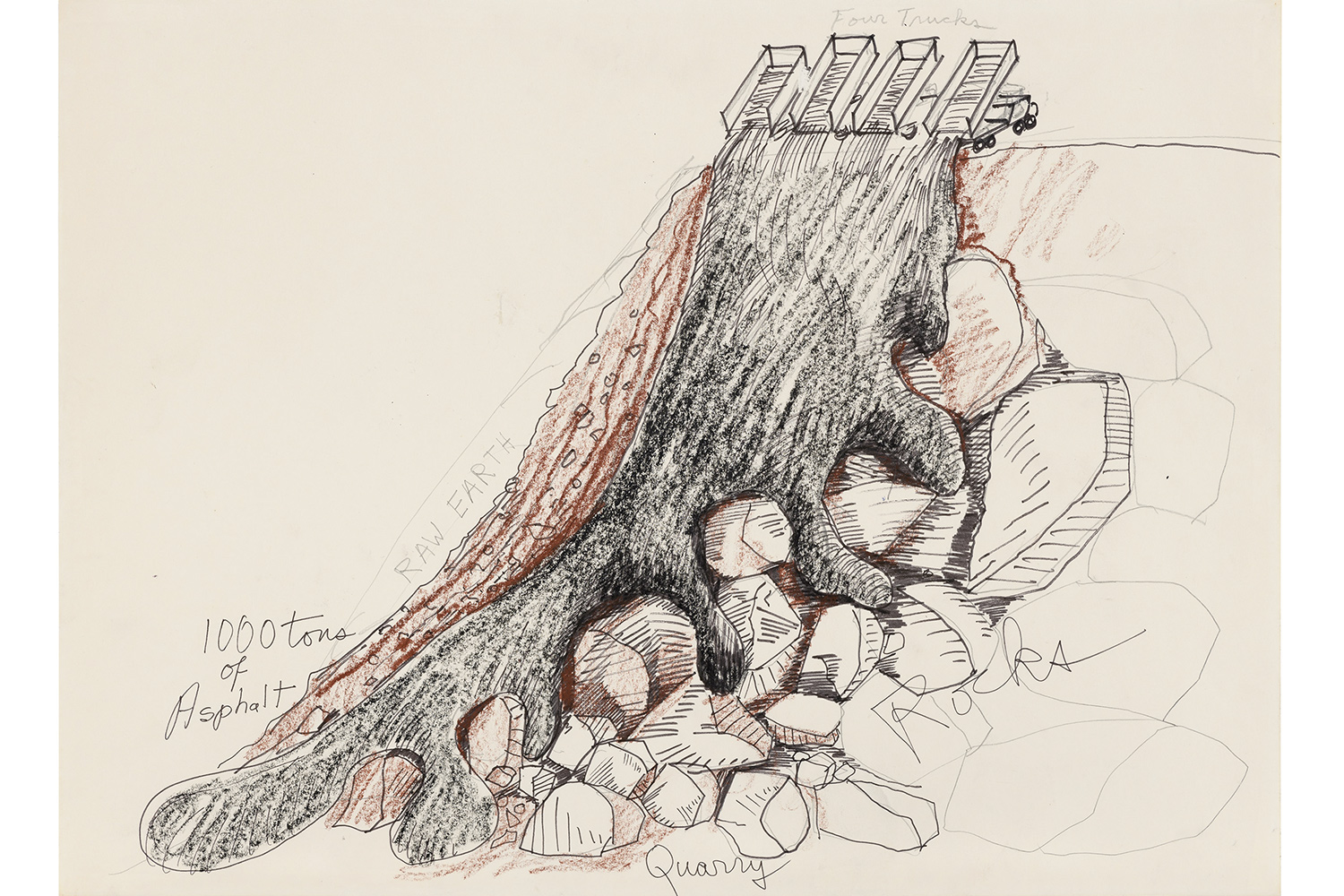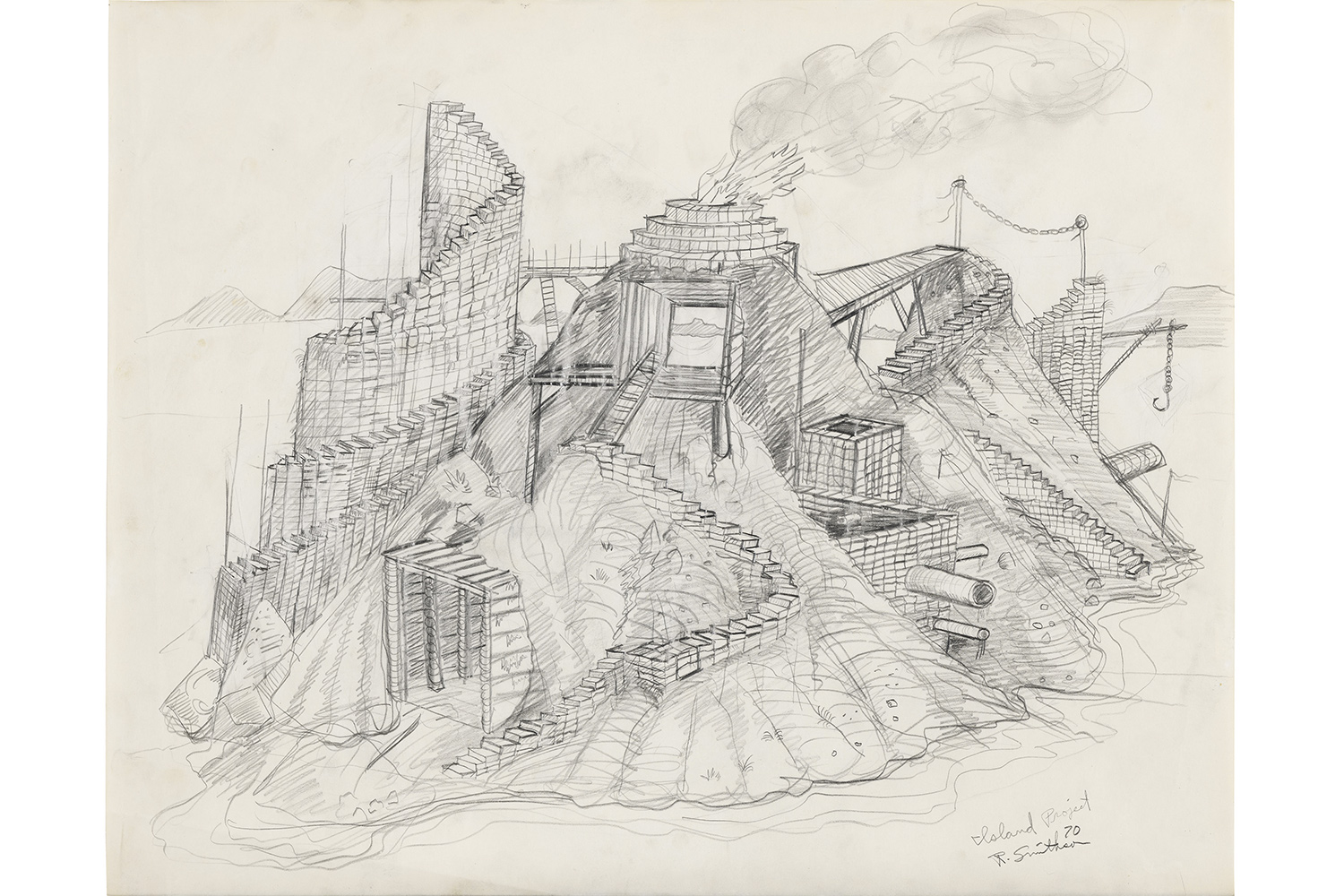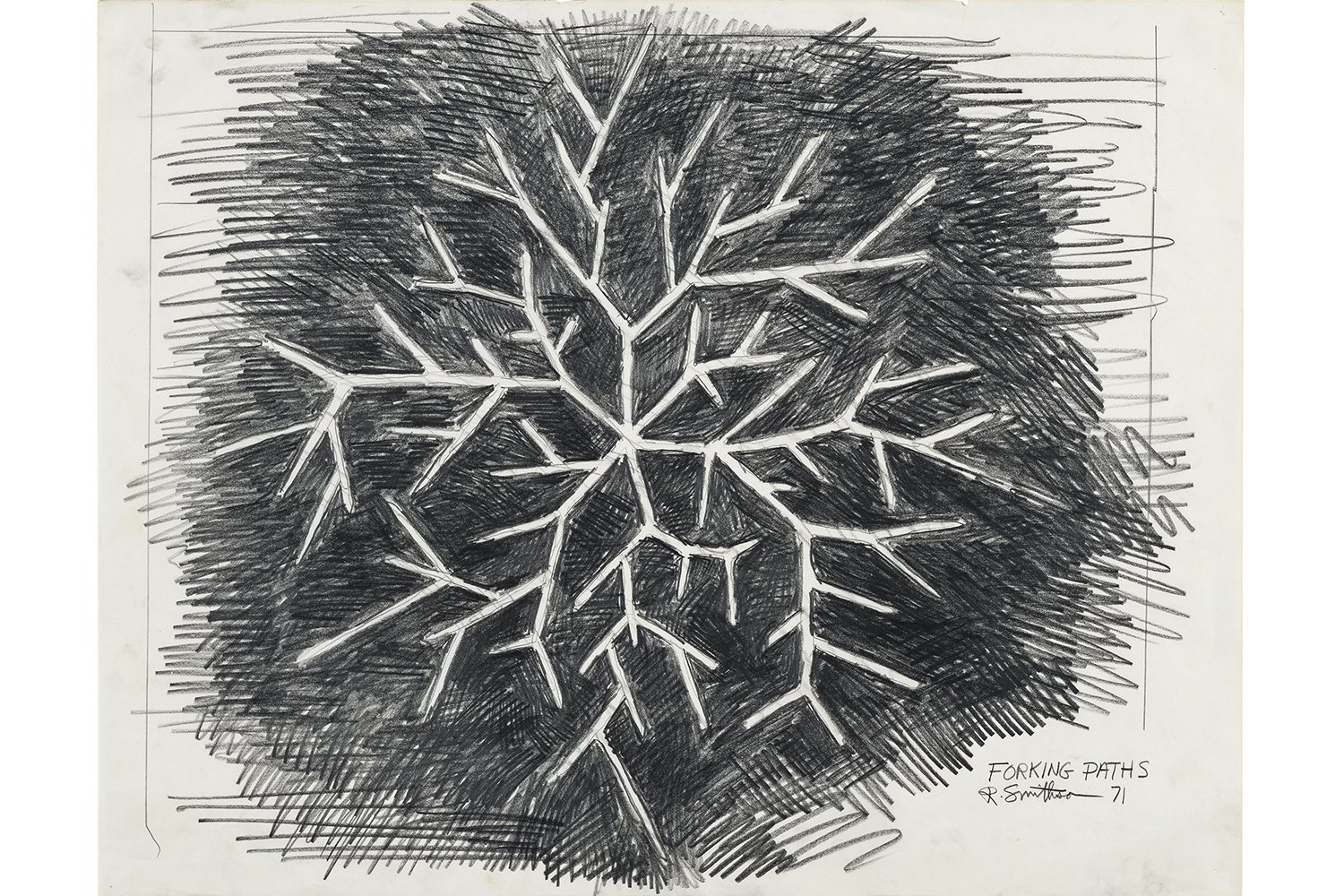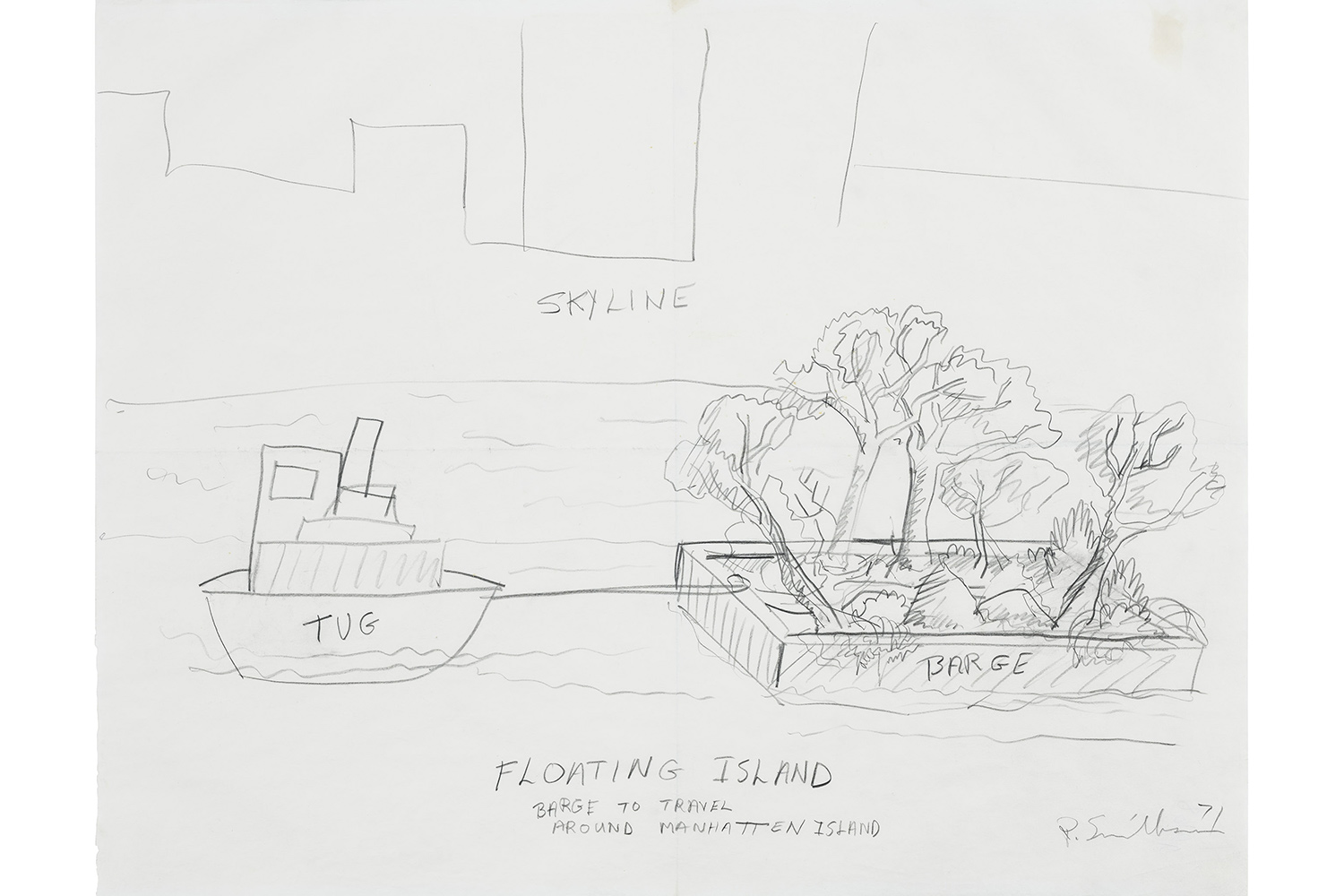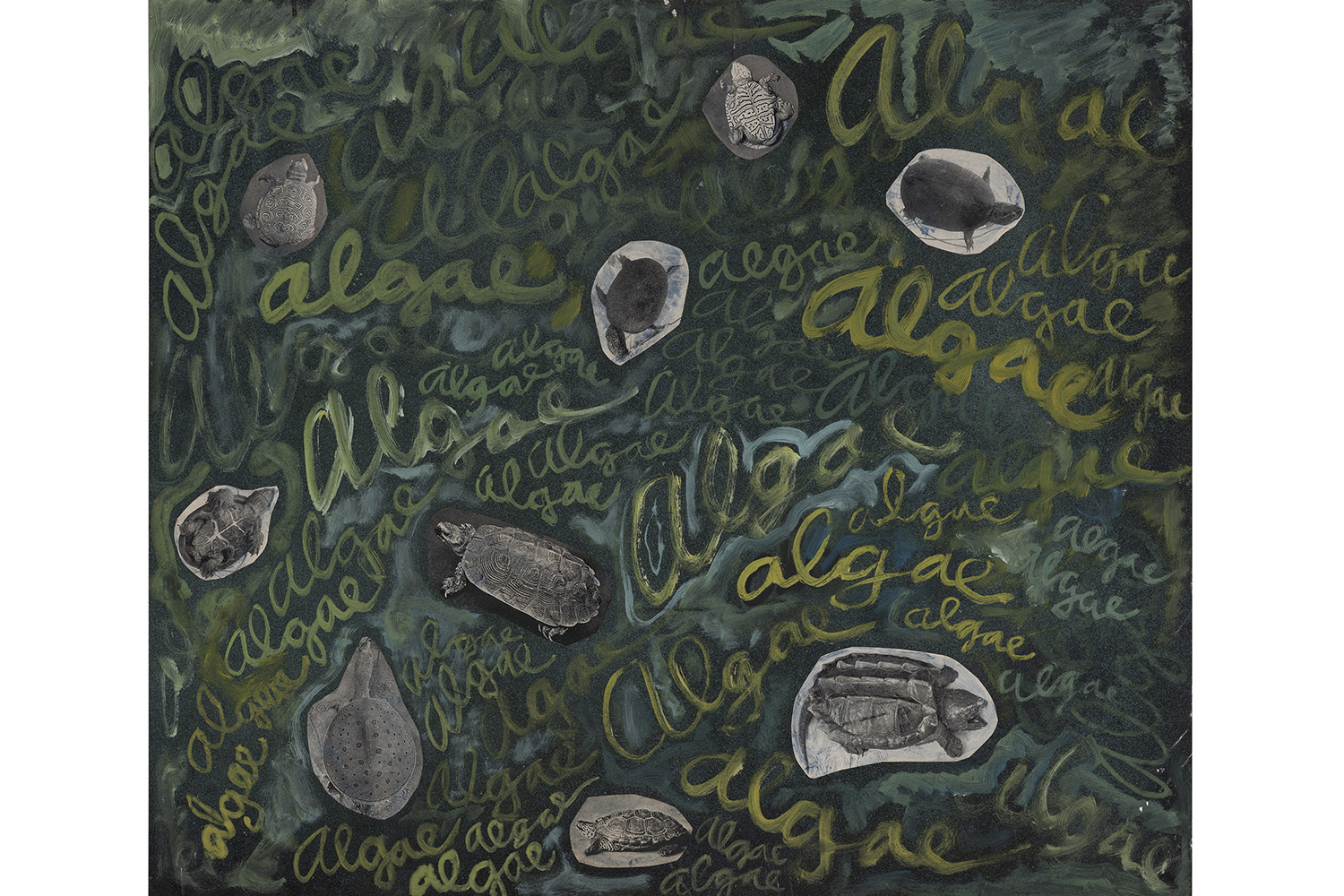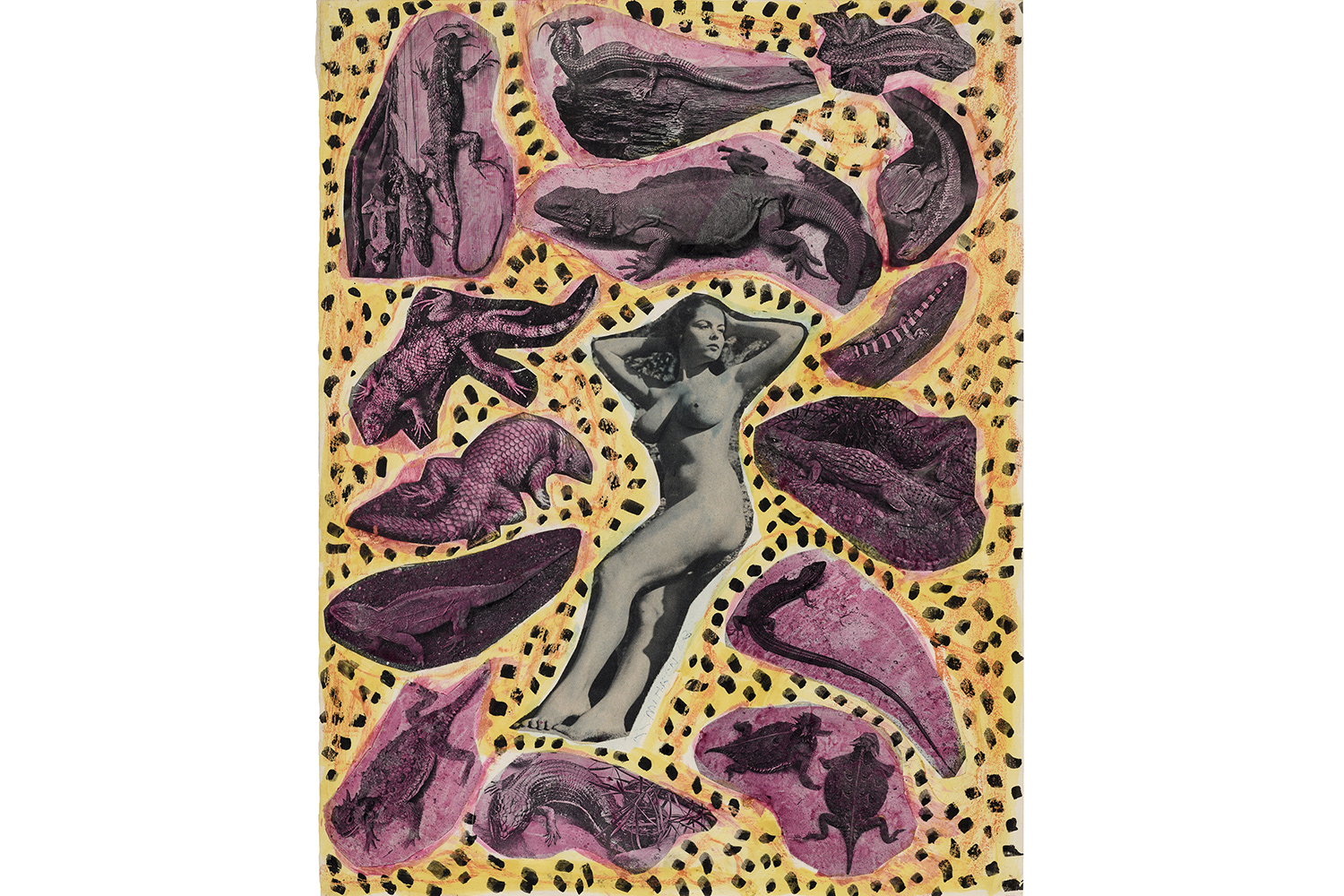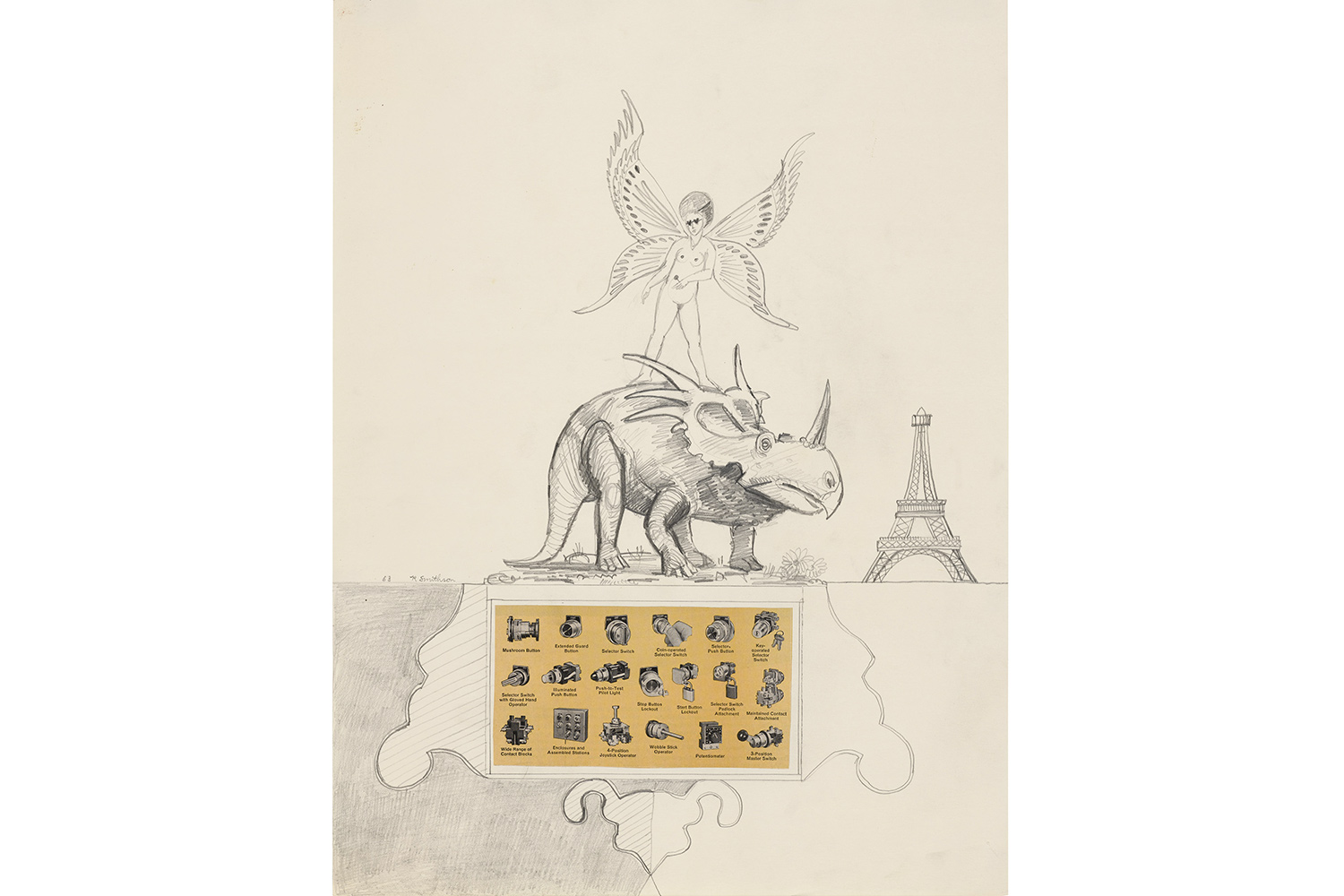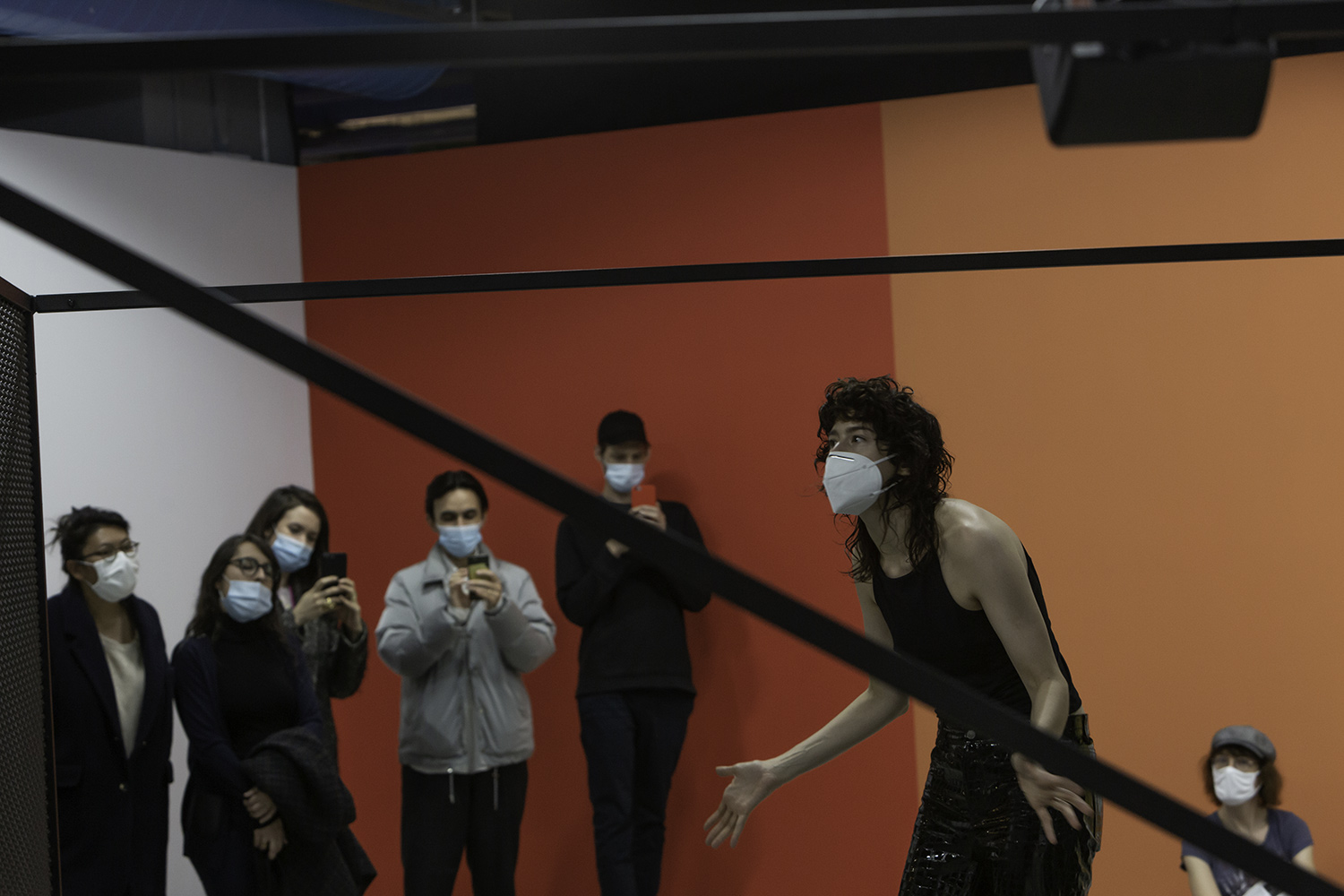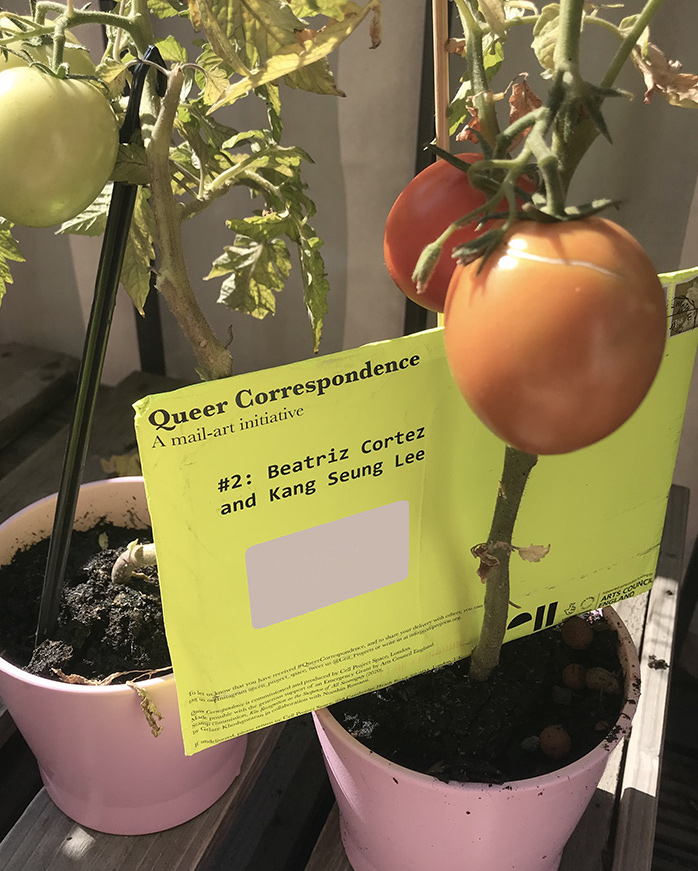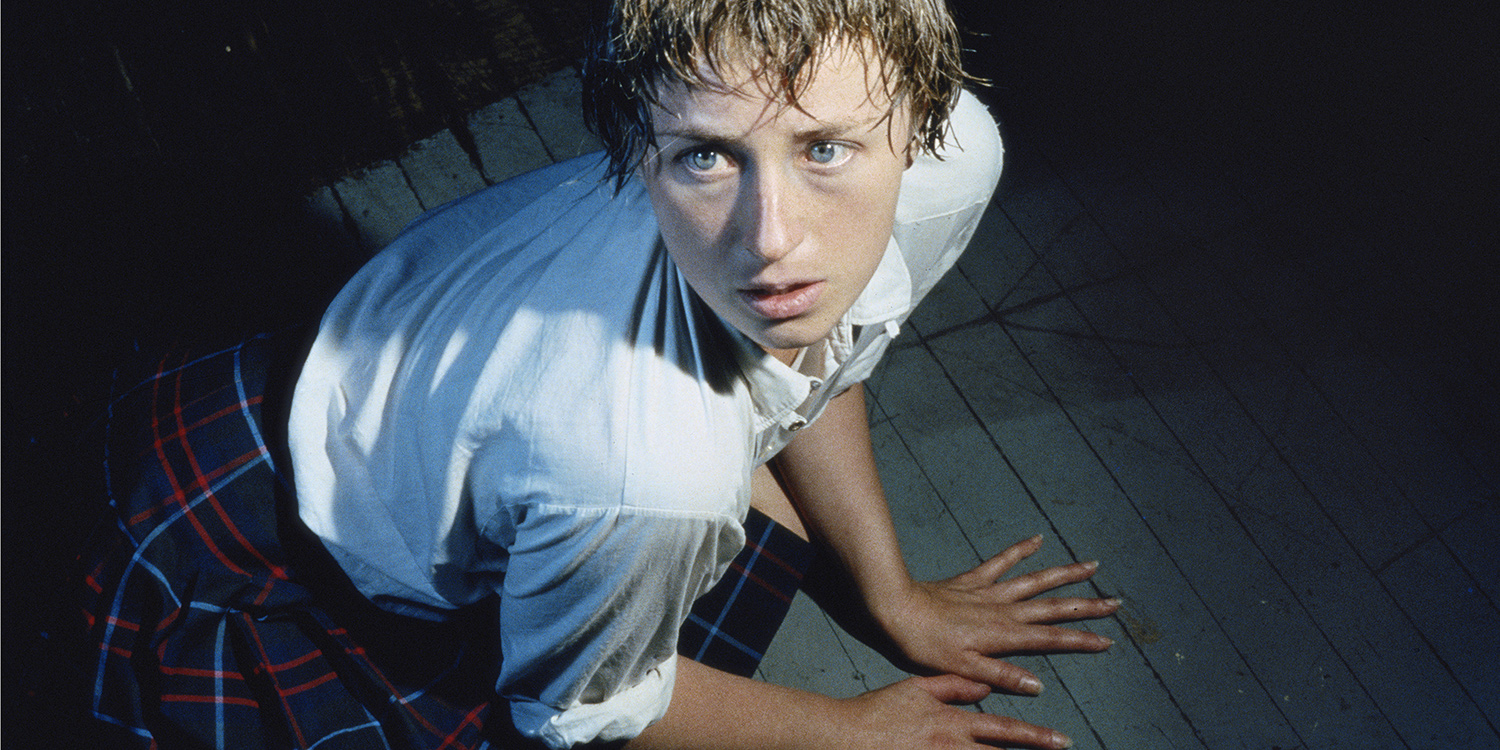Between 1957 and 1961, Robert Smithson (1938–1973) exhibited works with a stylistic affinity to Abstract Expressionism, which was then mainstream in New York. Although radically different from his later output in formal terms, these works already included recurring motifs and indulged in an interplay with the medium expressed via references to a Max Ernst series and the use of strips of painted paper. But after working for several months in Rome, Smithson withdrew from art circles and entered, in 1961, an exploratory period that lasted until 1964. During that intense research phase, his work took thoroughly new directions, in line with the artistic break made by the avant-gardes of the 1960s. It is to this pivotal period that Marian Goodman Gallery in Paris has dedicated the monographic exhibition “Primordial Beginnings.” The survey is being held concurrently with another Smithson exhibition, “Hypothetical Islands,” at Goodman’s London branch. The Paris show also includes later graphic works, such as Smithson’s preparatory sketches for his first Land Art works, including 1,000 Tons of Asphalt (1969) and Partially Buried Woodshed (1970), and minimalist works such as Surd Deposit (no date).
The visual experimentation of this corpus represents a geological and stratificational, rather than genealogical, plunge into his work. It echoes the recurrence of the motifs that run through it, and the paradigms that underwrite his writings, forming an illuminating cross-section of his oeuvre. The Smithsonian concepts of sedimentation and entropy, which here find a visual incarnation, link up with those of the Anthropocene, thus highlighting the artist’s radical topicality.
A set of three untitled works on paper from 1961 form a phantasmagorical geological description, a central Smithsonian motif. The intensity of the flat black tints and the use of a two-color pink-and-black process call to mind Matisse. Yet, in Smithson’s use of them, they refer to notions of void and abyss in a proto-historical and science-fiction world, and to the notion of the fall in the Divine Comedy. One of these pictorial works undertakes a reversal of the root motif, which would be reused in the Valley of Suicides series (1962), which makes reference to Dante, and in the three-dimensional work Upside Down Tree (1969). This set helps us to understand such Smithson works as Spiral Jetty (1970) and A Nonsite (Franklin, New Jersey) (1968), which are based on the notion of stratification and on the twofold dimension of what is visible, or inventoried, and what is invisible, or underground. The two-color process underscores the ubiquity of this in his works, and in particular in Spiral Jetty.
These motifs taken together underpin the sketches on view in the exhibition, such as Evolution of Amphibians (1962) and the preliminary study Labyrinthodtia (1962); graphic works such as Untitled (1962), which overlays the Angel figure on that of the dinosaur and scriptural elements; and Dull Earth (1962), which uses the geological motif. This is also the case with the collages. Algae, algae (1961–63) superimposes on an ad infinitum reiteration of this word, in a green hue that depicts the deepest depths of the sea, a set of vignettes of black-and-white images of turtles cut out from magazines, which seem to move around within an ocean of letters. Untitled (1963) organizes vignettes of pink-enhanced reptiles around the central figure of a naked woman, which conjures up the pin-up in his three-dimensional piece The Machine Taking a Wife (1964). The machine motif is also present between the lines in Paris in the Spring (1963), which brings together the figure of an angel wearing heart-shaped glasses, a dinosaur, the Eiffel Tower, and a vignette containing tools, illustrating Smithson’s conviction that “today’s highly refined technological tools are not much different in this respect from those of the caveman.” These references to Duchamp’s work give credence to the analysis whereby Smithson’s so-called “popular” praxis in fact echoes that of the avant-gardes from the 1920s to the 1940s.

